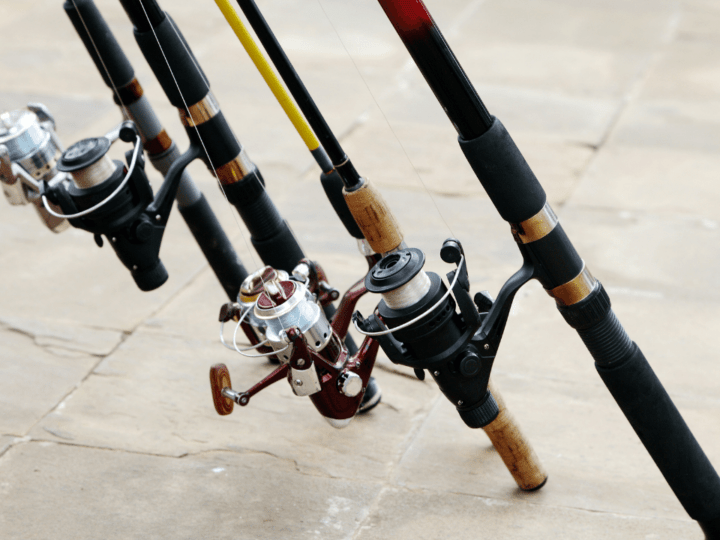When was the last time you went on a real fishing trip? Every time I go on a big fishing trip, I’ve always regretted not being able to bring my rods with me.
That’s why I put together this guide on how to ship fishing rods so that you’re not stuck renting gear on your next trip.
Table of Contents
How to Ship Fishing Rods
You can ship fishing rods using UPS, USPS, or FedEx. You need to make sure that the fishing rods are wrapped up securely, especially around the tips. You can pack longer fishing rods in dedicated shipping tubes or even use a PVC pipe for the most secure shipping.
Advice for How to Ship Fishing Rods
There’s one piece of advice I give to every fisherman who is packing up their rods for the first time.
Take care of packing your fishing rods. I’ve seen countless tips that have wound up poking through the end of a package and getting ground up in the shipping process. Rods can even snap if they’re put under too much pressure.
Whether you were shipping a telescoping fishing rod or a massive surf casting rod, put some extra care into the packing and everything will arrive in one piece.
Shipping Collapsible and Telescoping Fishing Rods
Collapsible and telescoping fishing rods are some of the easiest to pack and ship. Here’s how it’s done.
What Do I Need to Pack Telescoping Fishing Rods?
You’re only going to need a box that can fit your telescoping fishing rod. Depending on the size of the rod, you might even be able to get away with one of USPS’s in-house box sizes.
I’ve even seen some fishermen get smaller rods packed away safely into an old shoe box.
You’re also going to need bubble wrap, gaffers tape, and packing tape.
How to Pack Telescoping Fishing Rods
The first thing you want to do is collapse your telescoping fishing rod down to its smallest size. After that, begin to wrap your fishing rod in bubble wrap. Pay special attention to securely wrapping the tips as those are the easiest parts to break.
Use gaffers tape to secure the bubble wrap to the fishing rods. Gaffers tape doesn’t leave residue, and it comes off very easily, so it’s not likely to damage your rods.
Once your fishing rods are wrapped, snuggly place them into a box. You want to find a box that leaves almost no room around the fishing rods.
They shouldn’t be crammed into a box, but they also shouldn’t be rattling around like a Christmas present. Finish closing up the box with the packing tape.
Once your fishing rods are all packed, you’re ready to head to your shipper of choice to send the rods on their way.
Shipping Expensive Fishing Rods
One piece shipping rods are a little harder to send in the mail because of their size. Here are a few good tips for getting even the biggest shipping rods safely to their destination.
What Do I Need to Pack 1-Piece Fishing Rods?
You’ll be able to get most fishing rods packed into a mailing tube. You can pick these up at your shipping store choice. If you want a little extra security, you can buy a length of PVC pipe and cut it down to size. PVC pipe will provide the most security for longer fishing rods.
You’re also going to need the same bubble wrap, gaffers tape, and packing tape we used before.
How to Pack 1-Piece Fishing Rods
Carefully use the bubble wrap and gaffers tape and to wrap up your fishing rods. Just like last time, you want to pay extra careful attention around the tips to make sure they don’t break.
Once your fishing rod is wrapped up, you can slide it into your shipping tube.
Tape down the ends of the shipping tube with your packing tape. This should create a secure tube with nothing rattling around inside. It’s important to find a shipping tube that fits your rods snuggly. They shouldn’t have to bend in order to fit inside.
Now you’re ready to take your packaged shipping rods to your shipper of choice and send them off to your next big fishing expedition.
Fishing Rod Shipping FAQ
I’ve gone over all the basics on how to ship fishing rods, but there are still plenty of questions about this subject. Here are some of the more common questions and answers about shipping fishing rods.
Can You Mail A Fishing Rod?
It may surprise you that even some of the longest shipping rods can still be mailed. Even if you have an absolutely gigantic fishing rod that reaches over 12 feet in length, you can ship this with UPS or FedEx. USPS has a size limit of 130 linear inches.
How Much Does it Cost to Ship a Fishing Rod?
It’s actually pretty cheap to ship a fishing rod. Telescoping or collapsible fishing rods can be shipped for as little as $20. The larger your fishing rod is, the higher the shipping price is going to be. Most full-sized fishing rods can even be shipped for between $30 and $50. The price of shipping fishing rods goes up dramatically once they cross the line into oversized packages. USPS, UPS, and FedEx all have different rules and regulations for what counts as oversized. It’s not uncommon for some of the biggest surf casting rods to cost a few hundred dollars to ship.
Can I Bring a Fishing Rod on a Plane?
You are allowed to bring a fishing rod in both your checked and carry-on bags according to the TSA. The TSA’s official rules also allow you to bring small tackle in your carry-on bag. However, there’s a snag catch here that’s worth keeping in mind. The final decision rests on the TSA official that’s inspecting your bag. I’ve known plenty of fishermen to lose tackle and even rods when going through the TSA inspection. When in doubt, it’s better to send these items to your destination through the mail or leave them in your checked bags.
Wrapping Up How to Ship Fishing Rods
If you’re anything like me, you want to fish with your own gear. I’ve got nothing against the gear that fishing guides rent out, but nothing can replace the feel of the rods and tackle I’ve been using for years.
With this shipping guide, you’ll know how to ship fishing rods the next time you head out onto the waves.

